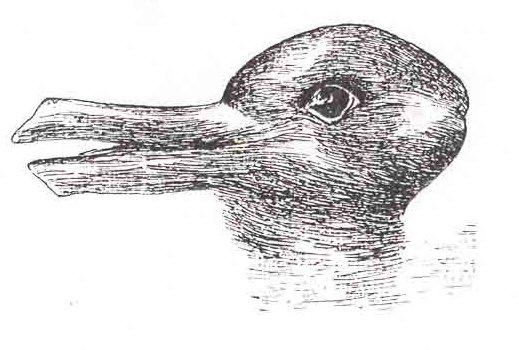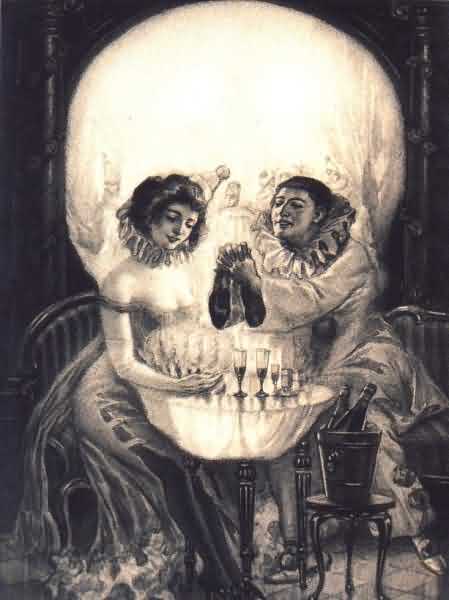“It’s what’s right with you that fixes what’s wrong”
Chris Dyas vividly describes how he teaches troubled children to be their own therapists.
Meg looked at me with eyes that reminded me of the rabbit I had narrowly avoided on the road when I was driving into work that morning. “Are you psychic?” she asked. I laughed. “No, it’s just that you’re human, and most humans react the same way when bad things happen…”
Meg and I were talking for the first time. She is 14 and her story is depressingly familiar to me. She was sexually abused by her stepfather for a number of years. When she finally disclosed what had been going on, the family fell apart. Her stepfather was charged and bailed away from the locality, but had been regularly seen by the rest of the family driving around the neighbourhood during the 18 months it took for the trial eventually to take place. Meg had been haunted by the prospect that he was plotting revenge against her and had become a virtual recluse during the pre-trial period. She was experiencing nightmares and flashbacks, but hadn’t told anyone because she was afraid that they would think that she was mad. Meg’s mother had never openly blamed Meg for what had happened, but Meg felt guilty all the same for the depression that had overtaken her mum in the wake of it. All of this had taken its toll on Meg’s school performance and ability to make and keep friends. She was feeling isolated and demoralised.
 Many children who have suffered prolonged abusive life experiences can end up ‘behind the pack’ when it comes to social skills. These young people have often missed out on the opportunity to develop these naturally as part of a daily unconscious interaction with a generally positive environment. Even those whose negative experiences are comparatively short-lived can lose confidence and feel socially de-skilled. Both groups of youngsters can therefore benefit from an opportunity to learn or relearn these skills consciously (as they would learn a second language), as part of a holistic package of therapy. This does not have to take very long, however, since I have found that the children I work with can quickly understand and make use of psychological ‘facts’ and techniques — provided these are explained in plain language, using appropriate metaphors, and demonstrated either in front of them or by reflecting their own experience.
Many children who have suffered prolonged abusive life experiences can end up ‘behind the pack’ when it comes to social skills. These young people have often missed out on the opportunity to develop these naturally as part of a daily unconscious interaction with a generally positive environment. Even those whose negative experiences are comparatively short-lived can lose confidence and feel socially de-skilled. Both groups of youngsters can therefore benefit from an opportunity to learn or relearn these skills consciously (as they would learn a second language), as part of a holistic package of therapy. This does not have to take very long, however, since I have found that the children I work with can quickly understand and make use of psychological ‘facts’ and techniques — provided these are explained in plain language, using appropriate metaphors, and demonstrated either in front of them or by reflecting their own experience.
Even small children can understand profound psychological ideas. My own experience is evidence of this. I was in no way an exceptional kid in school. However, when I was nine years old, I went into my local bookshop with my pocket money and I decided to have a go at reading The Psychology of Interpersonal Behaviour by Michael Argyll. I have to confess that the only reason I picked up Argyll’s book in the first place is because it was on a low shelf near some Star Trek books. Now, Star Trek was a HUGE influence on my early years — the character of Spock in particular. The fascination of Spock was that he was not emotionless as many suppose, but highly disciplined. Gene Roddenberry’s concept was that the Vulcan race became the way they were because they knew that they would destroy themselves if they did not find a way to control the expression of their emotions. Spock continually demonstrated that thinking was easier and clearer if one was able to remain calm, despite arousing circumstances. I loved the idea that I, too, could eventually learn to control the way my mind worked.
I first saw Star Trek when I was seven. The sheer cleverness of the metaphors and story-arcs in it made me ask quite profound questions as a youngster about what it meant to be human, how the world actually works — and how could I get to be a cool spaceman too. Through Star Trek, my mind linked science and adventure together, and probably the only reason I am a therapist now is because a helpful teacher told me that my maths wasn’t good enough for me to qualify as an astronaut.
 I have no idea how much I actually understood of Argyll’s book. I was a good way through it before my teacher kindly pointed out that the book was too old for me, and so I stopped reading it. Fortunately, however, I managed to read enough to absorb the idea of Maslow’s ‘hierarchy of needs’. Like the metaphors in Star Trek, once an idea like the hierarchy of needs locks itself into the mind it opens the door to other levels of perception. I began to see the hierarchy of needs everywhere — especially in my parents. This gave me something of an edge in predicting important things like the best time to ask for extra pocket money! A few months later I picked up a copy of De Bono’s Lateral Thinking — but this time didn’t tell any grown ups because I knew what they would say. Again, the effect was practical in that I was able to write far more creative essays (and write them faster, an important skill to a boy who considered homework to be a form of child abuse). And so began what has become a lifelong interest in practical psychology.
I have no idea how much I actually understood of Argyll’s book. I was a good way through it before my teacher kindly pointed out that the book was too old for me, and so I stopped reading it. Fortunately, however, I managed to read enough to absorb the idea of Maslow’s ‘hierarchy of needs’. Like the metaphors in Star Trek, once an idea like the hierarchy of needs locks itself into the mind it opens the door to other levels of perception. I began to see the hierarchy of needs everywhere — especially in my parents. This gave me something of an edge in predicting important things like the best time to ask for extra pocket money! A few months later I picked up a copy of De Bono’s Lateral Thinking — but this time didn’t tell any grown ups because I knew what they would say. Again, the effect was practical in that I was able to write far more creative essays (and write them faster, an important skill to a boy who considered homework to be a form of child abuse). And so began what has become a lifelong interest in practical psychology.
Patterns in the brain
“Would it help if I explained what has probably been going on in your head?” I asked. Meg nodded. I have a large white board on the wall of the room where I work, and I picked up a set of laminated pictures and began to stick them one by one onto it as I spoke. “What’s this, Meg?” “It’s a rabbit.” “How do you know?” She briefly looked puzzled and then said, “Because it looks like one.” “Would you agree that the only reason you know this is because you’ve see something like it before and someone told you that the right word for something shaped like that is ‘rabbit’?” Meg agreed, with an expression that hinted that she was beginning to feel relieved that she wasn’t the maddest person in the room after all.
“Bugs Bunny!” laughed Meg in response to the next picture I put up. “Yep, not just any rabbit, but a particular rabbit.” I now put up a picture of a pink silhouette that had a rabbit-shaped outline. “You can even see a rabbit in this one because your mind is able to match the shape to the one you keep in your brain for recognising rabbits with. OK, what do you make of this next one?” Meg looked hard “It’s a rabbit … no it’s a duck … er — it’s a rabbit and a duck.” “That’s right,” I said. “Your brain can match the shape to its pattern for rabbits, but it can also match it to the one it keeps for recognising ducks. Now, notice that you can’t see both at the same time. You only see one or the other — but you can choose which one to see. So in this situation you are actually deciding what to see.”

Meg’s expression had now changed to one of amused curiosity. My next picture had her stumped. “I don’t know what that is. It’s just blobs,” she said, as she screwed up her eyes. “What happens to the picture if I say ‘cow’?” “Oh yeah! It’s a cow!” “OK,” I replied, “now try and not see the cow.” Meg shook her head. “I can’t. It’s a cow.” “So,” I continued, “to begin with, your brain couldn’t find a pattern to match to the picture and so you literally couldn’t see anything. But when I gave it a hint as to what to try, your brain successfully made a match to the pattern it uses to recognise cows with, and now won’t give it up. This next picture is where I get to the point…”
I put up a picture that at first glance appears to be a hideous grinning skull, but on closer inspection becomes a scene from a Victorian fancy dress party. The skull shape is only inferred from what is basically an accidental arrangement of the people and objects in the scene. “My guess, Meg, is that this is what has been going on in your brain. Frightening things happened to you and your brain has recorded them as patterns it can use to spot if anything like it is going to happen again. But, it might have been doing its job a bit too well and matching these patterns to things that are not dangerous at all. The trouble is that the feelings that come up for you then are part of the pattern that has been matched inside your brain — not what is actually there outside you. Now, your brain does this pattern matching thing with the stuff you hear as well…”
Instructive words
I reached underneath the coffee table and pulled out a small video playback machine. “Just watch this for a couple of minutes,” I said, as I put in a video of Derren Brown’s TV show where he talks to different people on a train in the London Underground. The video shows him using suggestion and double meanings to get the poor unsuspecting travellers temporarily to forget where they are headed. “How did he do that?” asked Meg.
I took the pictures down from the white board and wrote out one of the sentences that Derren had spoken and showed how it could mean two things: one sounded like an innocent question about the traveller’s destination, but the other was an instruction to stop thinking about the destination.
“So, Derren asks the man which stop he’s getting off at — meaning which station — then talks a little about how easy it is to forget things, then asks the man again “So what stop, thinking about it now, what stop are you getting off at? What happens is that the man’s brain heard both meanings, but went with the one that had an instruction in it — ‘stop thinking about it now’.” We watched a couple more examples of him using more sophisticated versions of this and Meg rapidly began to recognise the suggestions as they were being said. “If your brain finds an instruction or a suggestion about what to do next, in what you are listening to, there is a part of your brain that feels obliged to have a go at it,” I told her.
Once the video was over, I pulled everything together, saying, “Imagine this … you are travelling along in a car. Suddenly the driver slams the brakes on because she’s seen a body lying in the street. A fraction of a second later she starts to laugh and says, “Who left that bin sack in the middle of the road?” Or you find that you no longer want to eat your dinner at school because someone is telling you about the time they threw up on that table. Or you are walking across the living room with a cup of tea. Someone says, “Don’t spill your drink!” Over it goes, as if it had a mind of its own! The driver of the car was probably hot and shaky even though there was no real body in the street. There was no real sick on the table. You tried your best not to spill the drink — but you did anyway. Why? The answer is in the way your brain sorts out what you see, hear, smell, touch and taste before you are able to start thinking about it. When you do get to think about it, your mind has already linked what’s in front of you to something that has happened before, even if that something turns out not to be appropriate. This only takes a fraction of a second — but a lot can happen in that time.”
 Meg and I talked about times when all of these things had happened to both of us, in one form or another. By the end of the hour we had agreed that we should do something about the way her mind was ‘seeing skulls’ and maybe acting on accidental instructions embedded in the things people around her were saying. The man who had abused Meg used to drive a blue car and Meg described feeling a stab of panic at the sight of all blue cars as a result. She also realised that she felt particularly bad when her mum tried to comfort her by saying something like “There’s no need to feel scared of him coming to get you” and decided she would explain what was happening to her mum, who could then be careful to use different language. We planned to meet again in a week’s time to use the rewind technique (a quick, non-intrusive means of resolving trauma) to stop the terrifying intrusive memories and nightmares she was experiencing. We would then look at how she could begin to rebuild a set of friends, catch up on her school work, and keep herself realistically safe whilst becoming confident about being out and about in her locality.
Meg and I talked about times when all of these things had happened to both of us, in one form or another. By the end of the hour we had agreed that we should do something about the way her mind was ‘seeing skulls’ and maybe acting on accidental instructions embedded in the things people around her were saying. The man who had abused Meg used to drive a blue car and Meg described feeling a stab of panic at the sight of all blue cars as a result. She also realised that she felt particularly bad when her mum tried to comfort her by saying something like “There’s no need to feel scared of him coming to get you” and decided she would explain what was happening to her mum, who could then be careful to use different language. We planned to meet again in a week’s time to use the rewind technique (a quick, non-intrusive means of resolving trauma) to stop the terrifying intrusive memories and nightmares she was experiencing. We would then look at how she could begin to rebuild a set of friends, catch up on her school work, and keep herself realistically safe whilst becoming confident about being out and about in her locality.
Learning the art of conversation
The rewind technique in the following session worked well. Meg reported that the nightmares and flashbacks had stopped and that she felt much better. She was keen to move on to how she could build up a set of friends again, because the reduction in her fear of going out was replaced by a keen sense of wanting meaningful contact with other youngsters. I introduced the following method to her by stressing how important it was that she understood the principle at the heart of friendship: namely, “I like you because you make me like myself”. I then talked about this how means that it is important to work at helping the other person to relax, and described the following method for initiating and keeping up a mutually enjoyable conversation:
- Copy the other person’s body language to create a ‘mirror image’
- Ask three questions — but no more than this until you have done the next two things
- Find something from what you have just learned to pay a subtle and relevant compliment about
- Find something in what you have found out to agree with
- Repeat until the conversation takes on a life of its own.
Teaching young people to follow this formula has the effect of taking their attention away from worrying about “What do I say next?” and “How well am I doing?” The idea is that the formula acts to lower their emotional arousal and enables them to find areas of common ground in order to create a sense of connection and understanding. The process automatically makes them appear more attractive to the person they are talking to, and confidence builds as they receive positive feedback in return. Meg and I took it in turns to run through the sequence until she felt that she could remember how to do it, and I then led her through a guided imagery exercise, where she vividly imagined successfully using the method to begin friendships with certain girls she liked at school. Before she left, I gave her a small laminated pocket card with a summary of the method on it.
Handling insults
When Meg came back to see me again she reported that the conversation skills method had worked, but had led to some unexpected unpleasantness from a girl who, we guessed, was feeling jealous that Meg was trying to muscle in on her friendship group. Despite this, Meg wanted to win her over. I introduced Meg to the idea of ‘popping’ insults. This involves understanding that a comment is only an insult if it is untrue (or mostly untrue — otherwise it is simply a fact). The power of an insult is in its ability to force the target to react angrily and attempt to prove it wrong. Therefore, the most effective ways of turning the tables on someone using insults are:
- Agreeing with the insult (without believing it on the inside)
- Agreeing with the insult and escalating its severity (for example “Yes, you’re right, and what’s more I’m the biggest ***** in the whole school”)
- Expressing feelings using a tone of voice that isn’t congruent with what is being said (for example “What you just said has wounded me deeply” in a flat bored tone)
- Expressing feelings in an exaggerated, theatrical way (for example “What you just said has wounded me deeply,” whilst staggering about clutching chest)
- Thanking the insulter for the insult and writing it down in front of them to add to the collection — murmuring that it’s not the best one but it will do for now
- Complaining that the insult is not good enough and that you can think of much worse things to be called (and give examples).
 The aim of each of these tactics is to sidestep the insult and to communicate the message that insults are futile. I linked these options to George Thomson’s ideas about tactical communication, which he calls ‘verbal judo’.1 Thompson is a consultant to many American police forces, and has developed tried and tested ways of using language that both keeps us calm and prompts voluntary cooperation with someone we may be experiencing difficulties with. In essence, this boils down to using positively phrased language (i.e. telling the other person what you want them to do, rather than what you don’t want them to do).
The aim of each of these tactics is to sidestep the insult and to communicate the message that insults are futile. I linked these options to George Thomson’s ideas about tactical communication, which he calls ‘verbal judo’.1 Thompson is a consultant to many American police forces, and has developed tried and tested ways of using language that both keeps us calm and prompts voluntary cooperation with someone we may be experiencing difficulties with. In essence, this boils down to using positively phrased language (i.e. telling the other person what you want them to do, rather than what you don’t want them to do).
We went over the Derren Brown tape again and I showed Meg how she could also use subtle suggestion to gently distract and redirect an annoying person without insulting them or escalating the situation into a battle of wills. One solution she liked was to plant suggestions in the other person’s mind while appearing to be talking about herself. For example, “I really need to go away now because I want to calm down and find something better to do. I expect you, like me, would agree this is the best way to end this.” The other person is compelled to pattern match to the embedded instructions and experience an impulse to do likewise. Again, we took turns practising both insulting and ‘popping’ each other (with much hilarity) and then I used guided imagery to give Meg an opportunity to rehearse responding in a positive and controlled way with the girl in question. I backed this up with another pocket card that she could refer to, if she needed.
Another young person I worked with on similar issues took the pocket card idea further. She was anxious that she would forget the method in the heat of the moment. The solution we found was to punch a hole in one end of the card so that she could hang it loosely around her neck when she went to school. On the blank side of the card she stuck a piece of scratchy Velcro. The card made its presence known to her continually, by tickling and itching — causing her to touch it regularly through the day and therefore to stay reminded and ready to use the advice on the card. She did not have to look at the card for this to work.
Saying no
Andy is a 16-year-old-young man who has been in care since he was nine years old. Despite knowing that it was impossible for him to live with his mum because of her difficulties with alcohol and drugs, he had not wanted to be parted from her. Despite living half the country away and seeing her only on an infrequent basis, Andy worried about her. This worry was at it worst at bedtime and he was managing just two or three hours of sleep most nights.
He was also running into trouble with his carers for being, as he put it, ‘easily led’ by his friends. We agreed that, given his experiences of losing touch with people who were important to him, it wasn’t surprising that he didn’t want to risk losing anyone else by saying no to them.
During the course of our conversation I described to Andy how we can be manipulated into a ‘one-down’ position by other people when they are able to bring up in us feelings of guilt or fear or uncertainty. “When we feel one-down in this way, it is easier for us to feel that we have to go along with what other people want us to do, because they seem more powerful. The trouble is that your feelings are ‘switched on’ before you start thinking. There are basically six feelings and humans have had them for a very long time — from way before the time when we had finally come up with weapons to stop lions eating us on a regular basis. There’s anger, fear, sadness, guilt, excitement and love.
Anger is a feeling designed to make you act quickly to defend yourself (or someone you love) as fast as possible by fighting, and fear is a feeling designed to make you act quickly to defend yourself (or someone you love) as fast as possible by running away. Sadness is a feeling designed to keep you safe while you get over losing someone or something you loved, because getting over these kinds of things can take a lot of thinking about and you may not be as alert about the dangers around you as you would be normally. So, sad feelings make you want to stay at home and not do very much — increasing the chances of you staying alive until you feel better again. Guilt is a feeling designed to put you off making the same mistake twice (especially if someone else got hurt or upset by what you did). Excitement is a feeling that makes you want to do whatever it is you are doing again, and therefore motivates you to learn things. Love is a feeling that makes us know that we belong to each other and that we will look after each other because we want to.
“Your feelings are part of your ‘survival kit’. They are designed to keep you alive. They are not necessarily concerned about whether or not you are happy though. Strong feelings tend to make it hard to think clearly. For instance, when you are angry, it is hard to see the other person’s point of view and, when you are excited, it is hard to know when ‘enough is enough’. The key to dealing with unwanted or pointless feelings is to learn how to calm down quickly.”
 Andy liked the idea of using guided imagery to help him to become calm at night and restore his sleep pattern. We agreed to meet again, once he was feeling properly rested and stronger, and look at devising a strategy for being able to say no to his friends in such a way that would not risk his losing them. This would include particular skills that he could use to raise his own awareness of where he was vulnerable to manipulation and tactics he could use to guard against this.
Andy liked the idea of using guided imagery to help him to become calm at night and restore his sleep pattern. We agreed to meet again, once he was feeling properly rested and stronger, and look at devising a strategy for being able to say no to his friends in such a way that would not risk his losing them. This would include particular skills that he could use to raise his own awareness of where he was vulnerable to manipulation and tactics he could use to guard against this.
Before he left, I talked Andy through a visualisation called ‘the sponge’ which involved imagining a bath sponge inside his head that soaked up all of his fears and concerns so that he was free to feel calm, relaxed and untroubled. I got him to see its colour, smell its fragrance and feel its texture so that a vivid image was created. I then talked him through moving the sponge through the whole of his body, finally shrinking away to nothing in his left foot — having taken all the stress and tension with it. Whilst he was in the highly relaxed state that this exercise created, I suggested that he could ‘sponge’ for himself anytime he needed to, and I led him to imagine successfully using the exercise that night and waking up fresh and strong in the morning. Andy came back the following week and reported that he was sleeping much better, not worrying about his family so much, and taking a keener interest in his appearance. “And I keep waking up with a strong desire to have a shower,” he said. It seems the ‘sponge’ was having an unexpected bonus effect!
Creating ‘cool’
Andy placed a lot of importance upon being ‘cool’. He liked my idea that he might become the coolest member of his group, because, if he were the coolest, he would not feel the need to be ‘led’ anywhere — instead he would be doing the leading and his mates would want to follow.
“Have you noticed that the coolest people do not seem to have to put any effort into it?” I asked. “Yeah, it’s like people just want to be with them,” agreed Andy. “I think this is because there is a big difference between attracting attention and seeking attention,” I went on. “Do you know the old story about the Sun and the North Wind having a bet about which one of them could get some guy to take his coat off? Well, the North Wind had a go and blew his hardest, but the guy just clung to his coat with all his strength. But all the Sun had to do was shine and the guy took off his coat because he was too hot. Truly ‘cool’ people shine a kind of calm control that everyone else secretly wants, and so they find it attractive.”
I introduced Andy to a social skills method I’ve named “The Art of Being Cool and Attractive,” designed to help young people develop an approach to others that will attract the right amount of the right kind of positive attention.
The ‘art’ is contained in ten ‘laws’:
- Learn to do with less attention than you would like at the moment
- Do not compete with other people for attention
- Say less than is necessary
- Learn to behave well from those who don’t know how to
- Do not ‘freeload’ or overstay your welcome
- Never whine
- Appear unhurried
- Be different — but not too different
- Appear not to want things you cannot have
- Exercise courtesy and tact at all times.
Catching up at school again
Meg came for what was to be her final meeting with me, because she was well on her way to functioning in the world in the way she wanted to. However, she was now acutely conscious that she was a long way behind where she wanted to be academically, and she was finding it a struggle to concentrate in class — mostly because she was focused more upon being worried than upon what the teachers were saying.
I taught Meg a way of developing her memory skills. According to Dr John Ratey, associate clinical professor of psychiatry at Harvard Medical School, “The brain assembles perceptions by the simultaneous interaction of whole concepts, whole images. Rather than using the predictive logic of a microchip, the brain is an analog processor, meaning, essentially, that it works by analogy and metaphor. It relates whole concepts to one another and looks for similarities, differences, or relationships between them. It does not assemble thoughts and feelings from bits of data.”2
 The exercise I taught Meg was designed to be highly entertaining, to provide a vivid demonstration of how good everyone’s memory can actually be — provided the information is put into it in the right way — and to show how easy it is to memorise even ‘dull’ information. The exercise involved learning to visualise a set of 10 objects that can be easily associated with a number from 1 to 10 (for example the number two was represented by a coin with two sides). These can then be connected to other objects or ‘facts’ in humorous or bizarre ways to create highly memorable pictures or mini-stories — the weirder the better! I quite often incorporate such practical learning skills into sessions, as they frequently promote other ‘therapeutic’ outcomes and a generally increased learning ability. This kind of method for enhancing memory is increasingly widely taught, along with techniques such as mind mapping,3 as they have been found to be aligned with how the brain works best. My aim with Meg was to show her a reason to feel optimistic about her potential at school and to boost her self-esteem. It worked.
The exercise I taught Meg was designed to be highly entertaining, to provide a vivid demonstration of how good everyone’s memory can actually be — provided the information is put into it in the right way — and to show how easy it is to memorise even ‘dull’ information. The exercise involved learning to visualise a set of 10 objects that can be easily associated with a number from 1 to 10 (for example the number two was represented by a coin with two sides). These can then be connected to other objects or ‘facts’ in humorous or bizarre ways to create highly memorable pictures or mini-stories — the weirder the better! I quite often incorporate such practical learning skills into sessions, as they frequently promote other ‘therapeutic’ outcomes and a generally increased learning ability. This kind of method for enhancing memory is increasingly widely taught, along with techniques such as mind mapping,3 as they have been found to be aligned with how the brain works best. My aim with Meg was to show her a reason to feel optimistic about her potential at school and to boost her self-esteem. It worked.
Professor Martin Seligman has long stressed the need to protect the future mental health of our children by cultivating optimism. Social skills training of the kind sketched in this article is aimed at doing this by proving the young person’s own power to them — in other words, promoting an optimism based on self-efficacy. At the heart of this kind of work with young people is a key idea. It is not simply to undo the effects of an unhappy past, or to help them feel better, or to stop them from behaving in an inconvenient, self-defeating way. As Aldous Huxley once said, “There is nothing wrong with you that what’s right with you cannot fix.” To put it simply, the idea is to instil in them the knowledge, backed up by the skills, that “It’s what’s right with you that fixes what’s wrong”.
CHRIS DYAS is a human givens therapist working for a children’s charity based in Newcastle under Lyme, which provides help for children who have suffered severe abuse, as well as consultation and support for their parents and carers. He also provides training workshops in understanding and communicating with traumatised children, as part of the local authorities’ child protection training programme for professionals. He has been applying the human givens approach to his work for the past six years.
This article first appeared in “Human Givens Journal” Volume 12 – No. 2: 2005
Back issues available – each issue of the HG Journal is jam-packed with thought-provoking articles, interviews, case histories, news, research findings, book reviews and more, with no advertising. If you find the articles, case histories and interviews on this website helpful, and would like to support the human givens approach, you can buy a back issue today, they’re available in PDF and print format.
References
- Thomson, G and Jenkins, J B (2004) Verbal Judo: the gentle art of persuasion. Quill/Harper Collins
- Ratey, J A (2001) A User’s Guide to the Brain. Abacus Books
- Buzan, T (2002) How to Mind Map. Thorsons, London

